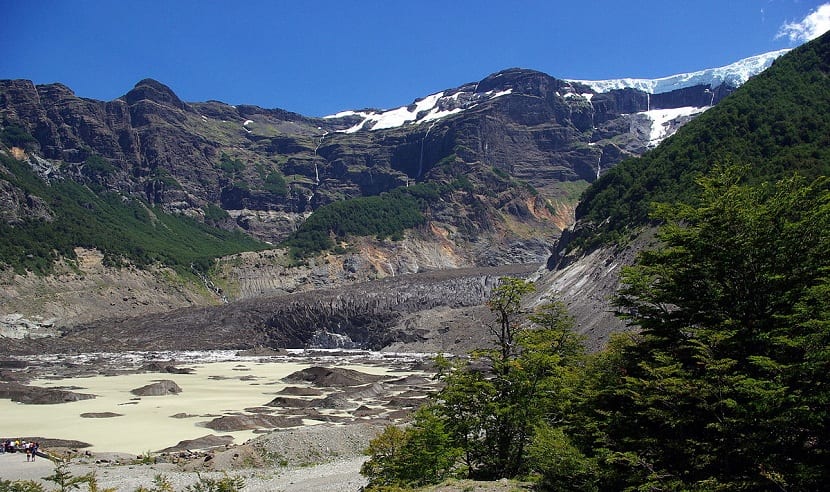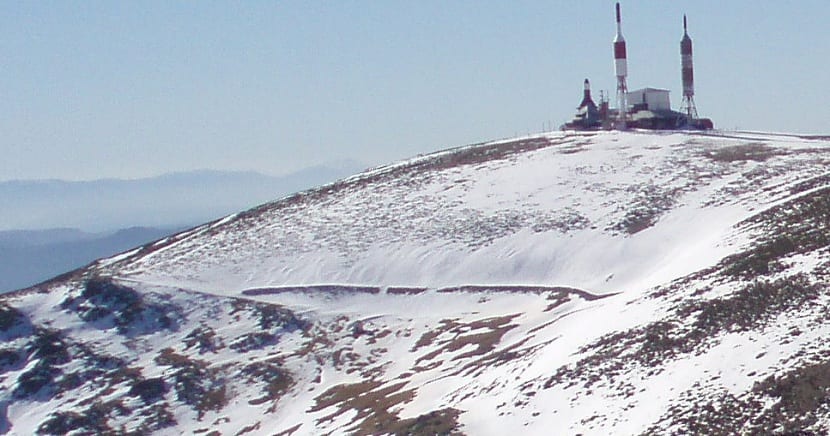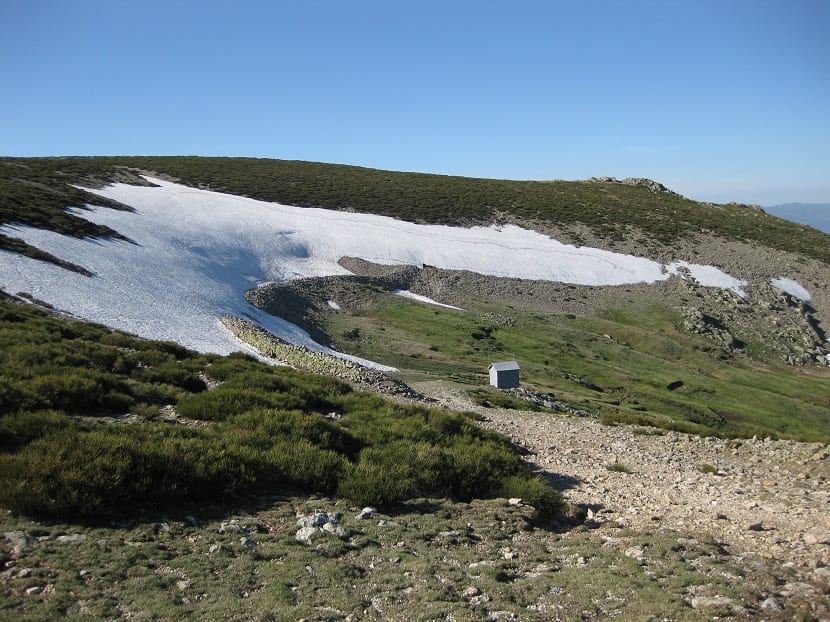
When we are talking about mountain glaciers, it is inevitable to hear the word ventisquero. Glaciers are of great importance worldwide, not only because they conserve large amounts of fresh water, but because they stabilize many ecosystems. Snowdrifts are areas that are formed within glaciers and are also important in the regulation and characteristics of the surrounding ecosystems.
In this article we are going to explain what a snowdrift is, how it is formed and which is the largest in Spain.
What is a snowdrift?

You've probably heard it more than once. The snowdrift is an area of the mountain where large accumulations of snow are found. If you have ever been to a snowy mountain, you will have seen an area where there is more accumulated snow. Even this snow is capable of perennially withstanding the highest temperatures and being there even in summer.
This is because the snowdrift is a protected area from meteorological activities. The snow storms that occur and blizzards throughout the winter accumulate snow in these areas. Being more protected from the wind, from the solar radiation and other environmental factors, it is capable of remaining accumulated.
Other variables that influence the size of snowdrifts is the accumulation of snow. The more snow has accumulated, the longer it will remain accumulated. This is what makes for a certain stability in different areas of the mountain that are adapted to these temperatures, humidity and the presence of snow and ice.
We find large and more famous snowdrifts such as the Condesa glacier, which is located in the Sierra de Guadarrama. In other countries such as Argentina and Chile this name is also used to call some areas of the glaciers of Patagonia. There are many mountain places where snow is stored near the mouth of rivers or near lakes. The constant melting of ice is what feeds these bodies of water.
Snowdrift of the Countess

This snowdrift mentioned above is quite famous. It is located in the Sierra de Guadarrama and is about 2.000 meters above sea level. This snowdrift has its use since people use the snow that is stored in summer. The melting of this snow little by little throughout the year increases the flow of the Manzanares River.
This snowdrift not only accumulates snow directly from precipitation, but also from that which is transported by storms, winds and blizzards. It is an area sheltered from the peaks where you can find a large amount of accumulated snow all year round.
It was used from the early XNUMXth century to the late XNUMXth century to collect snow. The snow was transported by carts pulled by mules to Madrid and other municipalities. Snow was used to keep food cold and to refresh some drinks. Keep in mind that at this time there were neither refrigerators nor freezers. Then, the natural snow accumulated throughout the year was used for these purposes. In order to optimize the use of this snow, a stone wall was created in the lower part, so that the snow accumulated more easily and in greater quantity.
This snowdrift is the most important on the southern face of the Sierra de Guadarrama. Its length is 625 meters and a width of 80 meters. This whole area is covered in snow all year round.
Snowdrift size reduction

Over the years, its total area has been decreasing as expected. The increase in temperatures produced by the increase in Greenhouse It is causing less and less snow to accumulate for various reasons. The first is a reduction in precipitation in the form of snow. With that, neither the wind nor the blizzards or storms can carry so much material. The second is a general increase in temperatures throughout the year, making it more difficult to preserve snow.
Thanks to the thaw that takes place in summer, the Manzanares River is fed with water. With the thaw it does not mean that the accumulation of snow disappears. On the contrary, it just reduces its volume. The "magic" of these places is that well into spring, they still have large thick masses of snow in storage.
This accumulation of snow is also due to the average temperatures that we find throughout the year. The average in the Condesa snowdrift is 5 degrees. Rainfall is 1400 mm per year, concentrating a third of it in winter. Of the 365 days a year, the snow usually lasts 250 days, which is a great achievement.
As for its vegetation, it is adapted to the presence of snow. It has a vegetation of small plants and short stature. They usually bloom when thaw occurs and cover up to 33% of the ground. Among the predominant vegetation in these areas are the joragales and cervunal pastures. There are also some mosses and herbaceous plants but small in size.
fridges

Along with the snowdrifts, you have surely also heard the snowfields. This snowfield refers to the same thing as a snowdrift. That is to say, a not very extensive mountain area where snow accumulates capable of holding up even in summer. It is a small cirque glacier. These snowfields are concentrated at altitudes between 2.500 and 3.000 meters.
There are also times when these areas are called helero. However, it has more tendency to be called that when what accumulates is an ice sheet that takes place where cold nights on the melt water.
As you can see, nature has areas where the common is not. The most normal thing is that the snow falls and melts after a while, as the temperatures rise. In this case, the snowdrift is able to accumulate them for a longer time.